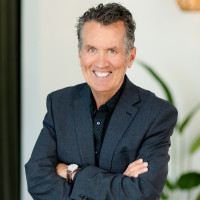Longevity or healthy aging is top of mind for consumers—and not just baby boomers. Increasingly, younger consumers are looking at supplements that support overall good health and immunity as part of their wellness regime.
Of course, advances in technology open the doors for individualized analyses of what each consumer needs in terms of diet, supplements and exercise. Jumping on this opportunity, Gil Blander founded InsideTracker in 2009 with a group of physicians, scientists, exercise physiologists and others. InsideTracker sets the highest of bars on self-quantification—offering users DNA analysis, blood biomarker testing and integration with fitness trackers to record exercise, sleep and other habits—to create customized recommendations for healthier lives and a running score to gauge progress and achieve goals. The result is a rich trove of data at the personal level and also a deep reserve of data on how the user base is aging.
Blander, who has a doctorate in biology from the Weizmann Institute of Science in Israel, serves as the president and chief scientific officer of the Boston, Massachusetts-based company. Nutrition Business Journal spoke with Blander about the trends he's seen in analyzing longevity-related data.
What share of customers would say healthy aging is a focus of their self-quantification?
When asked to select a single reason for purchasing InsideTracker, over 30% of InsideTracker customers cite healthy aging as their “why.” Other popular responses included general health and wellness and endurance performance. We’ve recently developed standards for how we define customers who are focused on self-quantification. For example, these customers have measured their blood biomarkers with InsideTracker multiple times over the past several years. Based on our standards, we recently surveyed customers who are highly focused on self-quantification. The survey found that nearly 90% of respondents are focused on healthy aging.
What are some of the main nutrition recommendations tied to aging and what share of them include supplements?
 InsideTracker provides recommendations in four key areas—nutrition, supplement, exercise, and lifestyle. So, customers can receive both nutrition and supplement recommendations to improve their blood biomarkers and help them age healthfully. InsideTracker takes a food-first approach. In practice, that means that, depending on one’s biomarker levels and current food habits, food recommendations are provided first.
InsideTracker provides recommendations in four key areas—nutrition, supplement, exercise, and lifestyle. So, customers can receive both nutrition and supplement recommendations to improve their blood biomarkers and help them age healthfully. InsideTracker takes a food-first approach. In practice, that means that, depending on one’s biomarker levels and current food habits, food recommendations are provided first.
A customer may see an aging-related food or supplement recommendation for one of two reasons: either the food or supplement can improve a biomarker that is correlated with aging that the customer has suboptimal, or research specifically indicates that a food can independently improve the aging process.
InsideTracker’s platform simulates the personalized guidance you’d receive from a dietitian, all through an app, from the results to the personalized recommendations. Certain food recommendations are for specific foods, such as oatmeal and dark chocolate, and others remain as general categories, like whole grains, nuts, and fatty fish. We find that providing food categories and suggesting optimal foods within that category accounts for the guidance that customers seek while encouraging flexibility and diversity in choices. These include recommendations for foods like dark chocolate, fish or supplements like phytosterols or curcumin with specific descriptions of how they will benefit the customer.
What kinds of actionable insights does InsideTracker offer that can help control aging?
InsideTracker provides nutrition, exercise, supplement, and lifestyle recommendations that customers can take action on to help control aging. Examples include resistance training or encouraging exploration with intermittent fasting, prioritizing quality sleep or practicing mindfulness meditation.
Across the user base, what are some of the key findings?
InsideTracker quantifies a customer's biological age—the age at which they're aging on the inside—with a calculation called InnerAge. People age at different speeds—some faster, some slower. Biological aging depends on lifestyle factors like diet, exercise, stress, and sleep. Blood biomarkers—objective biological indicators of health—change over time. Specific biomarkers can predict the rate at which your body is aging on the inside. Daily habits impact these blood biomarkers. So it's essential to measure how these habits are affecting your body. For example, blood glucose is a well-documented marker of aging. Properly regulated glucose levels are essential for maintaining overall health, performance, and longevity. However, glucose regulation can decline with age. Research and customer data show a strong correlation between blood glucose and age—a lower glucose level is associated with younger age and vice versa. Three biomarkers of aging in females most commonly found to be suboptimal are blood glucose, DHEAS, and LDL cholesterol, with over 50% of female customers having suboptimal levels of each of the three. And the three biomarkers of aging in males most commonly found to be suboptimal are blood glucose, SHBG [sex hormone binding globulin], and LDL cholesterol, with over 55% of male customers having suboptimal levels of each of the three. Customers cite using their biomarker levels, specifically suboptimal biomarkers of aging, as a catalyst for change. It’s important to note that these biomarkers are modifiable—meaning nutrition, exercise, supplement, and lifestyle habits can help to improve and optimize them.
How do you see self-quantification changing the way Americans age?
I think that self-quantification has changed the way Americans approach their health. Traditionally, people seek care during an annual physical or when something is wrong. However, the rising interest in self-quantification—gathering your body’s data to understand how it’s performing—has flipped this concept on its head. Rather than waiting until a health issue has snowballed into a more significant issue, self-quantification takes a proactive approach to health. The rise of self-quantification has allowed people to take autonomy over their health. People can now seek answers to their current health status, and when people know where they stand, they can take action.
What conditions associated with aging can InsideTracker measure?
InsideTracker is using the following inputs: blood biomarkers, physiological markers from activity trackers, DNA risk score, and self-reported data about the user. All of that provide us with a high-definition view of the user body, specifically:
How active is the user and are there any changes in her activity from baseline to follow-up to later time (during the aging process), similarly for resting heart rate, sleep quality and many other physiological conditions
Most of our organs performance deteriorated during the aging process, and we can observe it by looking at blood markers related to those examples: lipids level for heart health, glucose for sugar metabolism, liver enzymes for liver function, inflammation markers for immune system function.
Could InsideTracker's findings about aging potentially drive product development for supplements or pharmaceuticals?
Yes. We have the biggest database of free range humans (almost 100,000 relatively healthy humans with blood, DNA and fitness tracker data), this data can indicate what issues are more prevalent for specific sub population based on age gender, ethnicity. We can also look at two sub population with similar age that separated by their activity, resting heart rate, and nutrition and find what are the differences between the two populations in blood biomarkers deficiencies and other. That can help product development specific for specific sub populations.
This interview was featured in the November issue of Nutrition Business Journal.
About the Author(s)
You May Also Like





